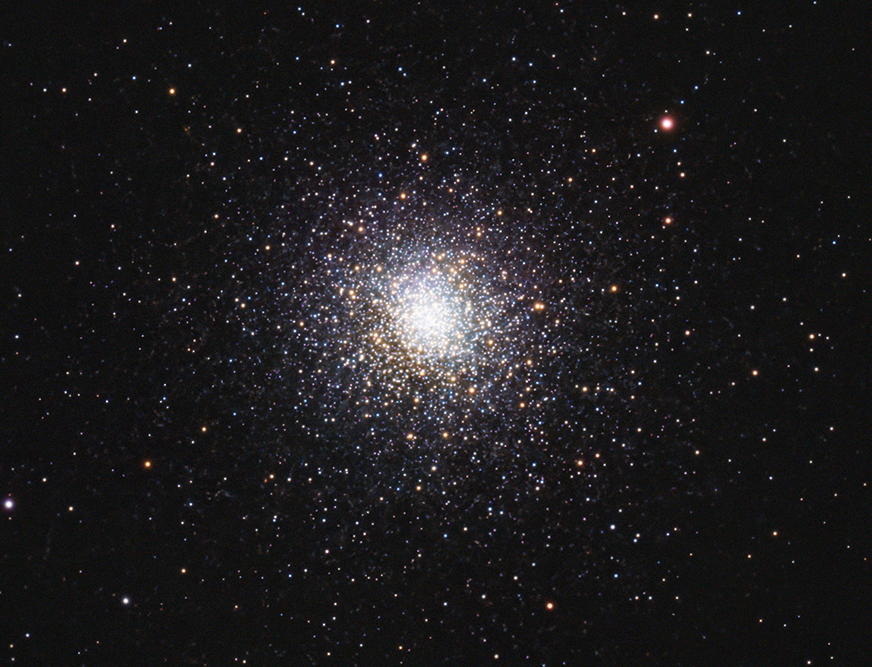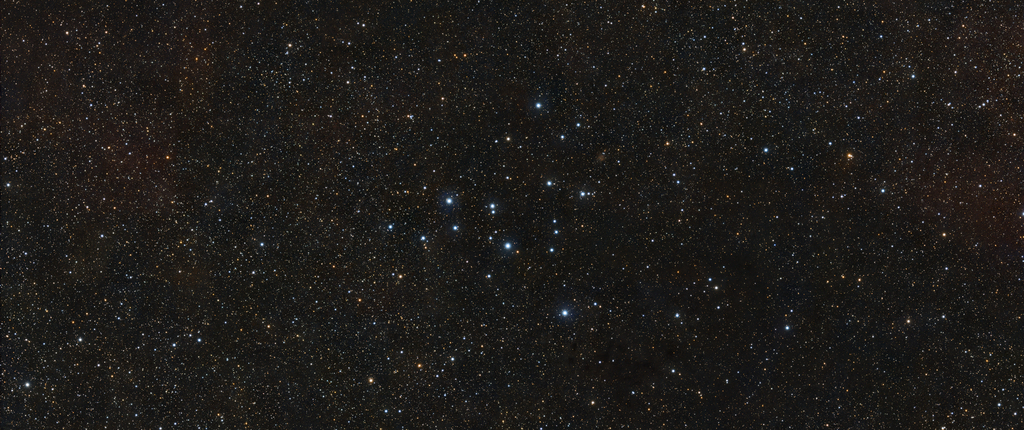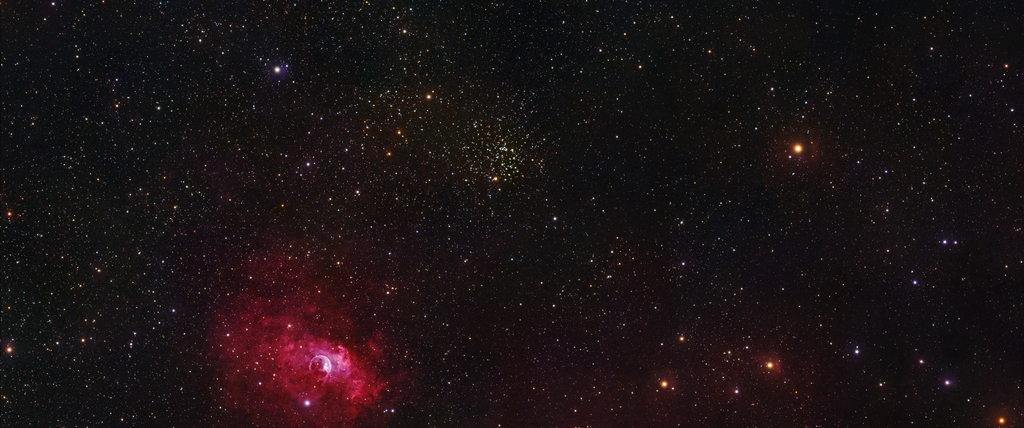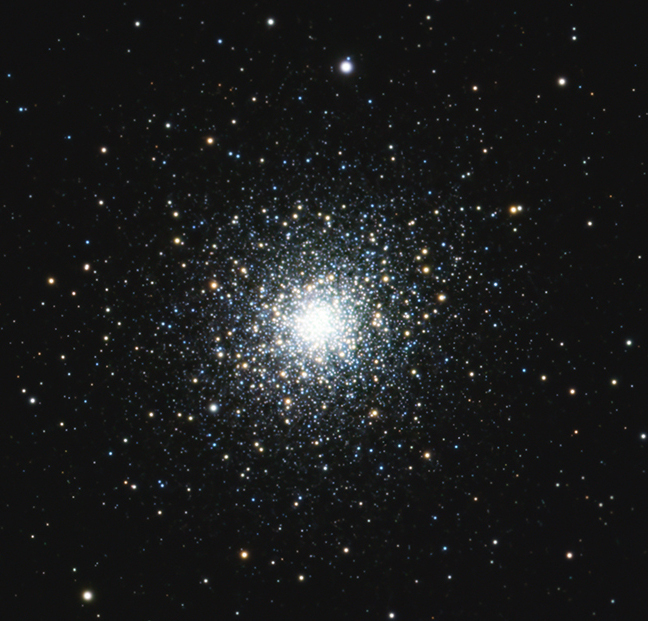M52, is a fine open cluster located in a rich Milky Way field. It is one of the rich clusters for which amateur Jeff Bondono has proposed the name "salt and pepper" clusters.
NGC 7635, also known as the Bubble Nebula, Sharpless 162, or Caldwell 11, is an H II region emission nebula in the constellation Cassiopeia. The "bubble" is created by the stellar wind from a massive hot, 8.7 magnitude young central star, SAO 20575. The nebula is near a giant molecular cloud which contains the expansion of the bubble nebula while itself being excited by the hot central star, causing it to glow. It was discovered in November 1787 by William Herschel.




